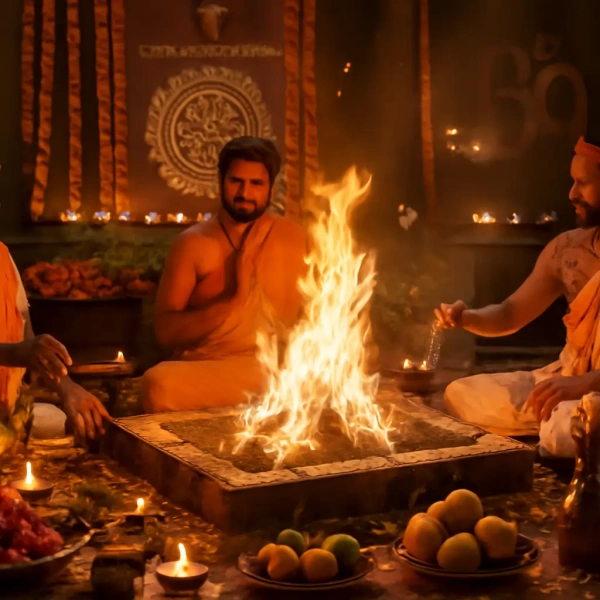In the spiritual heart of India, where temples, traditions, and timeless teachings coexist, one figure silently bridges two major religions- Gautama Buddha. He is the founder of Buddhism. Yet the same Buddha in Hinduism holds a significant place in Hindu mythology and beliefs. This special connection incessantly reminds us of our shared cultural heritage.
Buddha in Hinduism: The Ninth Avatar of Vishnu
Hindu sacred texts treat Lord Buddha as the ninth incarnation (avatar) of Lord Vishnu, within the auspices of the divine sequence called Dashavatara. This transcends just a symbolic portrait. It shows how Buddha’s teachings revolutionized ancient Indian thought.
When rites became right, compassion slipped into formalities. Then, the inert soul realized Buddha—as the soul took itself once again back to the essence of dharma with simplicity and mindfulness.
Hinduism and Buddhism on a Spiritual Plane: Their Similarities
Though different in many respects, these philosophies interconnect in certain basic beliefs so deeply that observers may perceive them as threads in one common sacred tapestry. Both philosophies teach:
Karma (cause and effect) – Rebirth and liberation (Moksha or Nirvana) – Detachment from material desires – Mindfulness and meditation
Hinduism confirms the reality of the eternal Atman, while Buddhism denies the reality of an eternal Anatta. Yet, both share common goals: liberation from suffering and reunion with God.
Want to know more about Wealth and Prosperity Rituals
That which is the temple becomes a story
Stepping into temples that were ancient sites in Odisha, Andhra Pradesh, or Tamil Nadu, it is sometimes noticed that statues of Buddha are carved next to Hindu deities. Here, Buddha does not find himself as an outsider. Instead, he belongs to the spiritual family.
In many Indian households, lamps are lit on Buddha Purnima not out of any resignation, but respect. His image in peace is often kept beside idols of Krishna and Shiva. This happens in homes that perhaps profess a more syncretistic spirituality.
Its cultural assimilation does not bother with religious denominations — it is a way of being that regards knowledge as universal.
Buddha’s Message: Universal and Timeless
Most wonderful about Buddha’s legacy is that he never asked for followers — only seekers.
He sat under the Bodhi tree, not to preach but to understand. His silence, his calm, and his detachment were not meant to divide, but to heal. Follow his teachings through the Four Noble Truths or admire his compassionate way of life. Either way, the one constant is this: The Buddha’s teachings rise above any religion.
That is probably why he has been embraced within the Hindu tradition not as a rival but as a divine presence. He serves as a messenger of peace whose very words continue to sound across centuries and continents.
Return of Religion, Relevance, and Reverence
With the whole world in a rush and opinions flying about from all corners, life being interspersed with much noise, Earth halted for one moment to receive the visit of Buddha. For being, besides much else, a teacher of mindfulness, middle-pathness, and basic inner freedom, these teachings have gained immeasurable importance here across time. Stressor, conflictor, or awareness-creator, his path provides a muted but very ripe environment for deep consolation.
What prevails amongst many Indian youths these days is spiritual curiosity on these lines: meditation, yoga, the Dhammapada, Bhagavad Gita. Such is the beauty of spirituality in India- you do not have to choose.
To him, one can fast with Krishna, chant the Gayatri Mantra, and find peace in the silence of the Buddha.
Final Thoughts: One Spirit, Many Forms.
So, is Buddha a Hindu god? A Buddhist monk? A global spiritual icon?
Depends on the point or the heart as well.
Somewhat an avatar of Vishnu to some, he is the Enlightened One to others who pointed to the way to liberation without recourse to God at all. Mostly, he stands as an iconic manifestation of peace, such as a gentle reminder to slow down, think, and be kind.
With the lifting of the Buddha into Hindu discourse, we do not create any gaping holes here. However, we render evident to everyone that the truth has several faces. Love, compassion, and wisdom are so much more than definition.
At your next sighting of the serene statue of Buddha seated beside a tulsi plant or an image of Lakshmi, you earn a smile from yourself. This moment is for having witnessed one of the greatest truths of India.
Here, spirituality does not mean a straight line- it’s circular. Everyone belongs.

